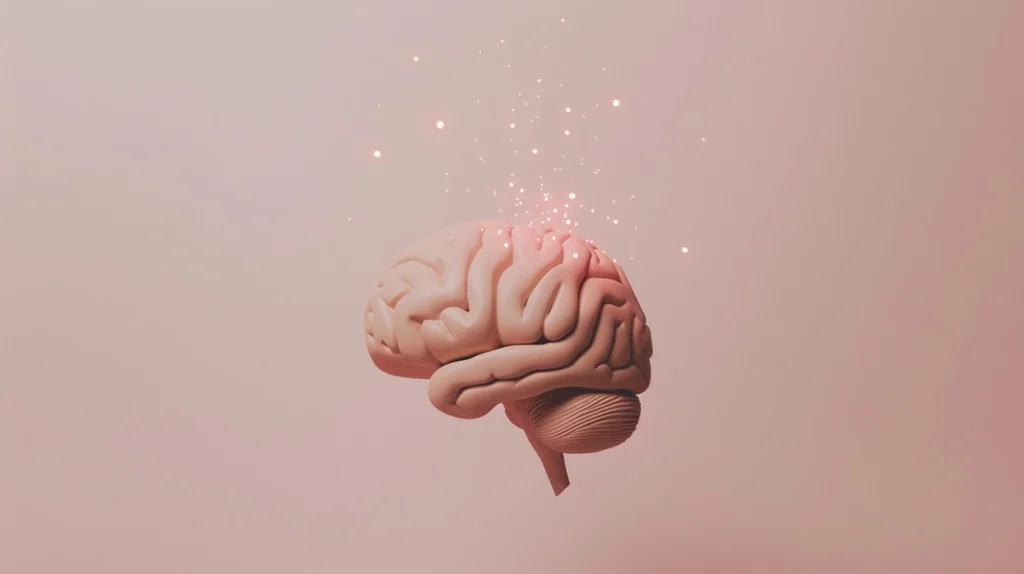
You may have landed on this page because you have tried every antidepressant your family doctor could prescribe, every mindfulness app your friends recommended, and perhaps even wondered whether life will ever feel bearable again. I know that sinking feeling of exhaustion. You keep searching for answers, yet headlines shout about danger and addiction whenever the word “ketamine” appears. It is no wonder you hesitate.
The media loves eye-catching statistics. For example, the Australian Institute of Health and Welfare reports that recent ketamine use among Australians increased from 0.9% in 2019 to 1.4% in 2022–2023, meaning that around 300,000 people had used it in the previous 12 months. Ketamine also contributed to 0.033% of emergency department visits involving illicit drugs in the United States in 2005, with this percentage rising to 0.12% by 2011. In 2011, 71.5% of ketamine-related emergency visits also involved alcohol.
However, these figures only tell part of the story. They describe recreational, unsupervised, or polydrug situations – settings a world apart from the physician-guided, therapy-embedded, low-dose use I oversee every week at Field Trip Health clinics across Canada. In fact, I’d argue that a narrow focus on sensational statistics may keep you away from a therapy that could offer relief faster than any conventional medication you have tried. By the end of this article you will have a clear, evidence-based understanding of what addiction actually means, what the medical literature says about ketamine’s dependence potential, and precisely how we at Field Trip build multiple safety nets to make sure the medicine works for you, not against you.
Why Your Fear of Ketamine Addiction Makes Sense
I think that anyone who has witnessed the opioid crisis, seen a family member lose control of alcohol, or watched a friend become dependent on benzodiazepines naturally carries a heightened suspicion about any psychoactive substance. Drug addiction can devastate both careers and families, and in some regions of the US and Canada, it keeps emergency-room physicians constantly busy. Hearing reports of rising drug use in the news, it’s understandable to think, “Ketamine must be irresistibly addictive.”
In my experience, however, numbers without context can be misleading. Recreational ketamine is typically snorted or swallowed in large amounts, mixed with alcohol or stimulants, taken in crowded venues, and repeated throughout a single night. The scenarios look nothing like a quiet therapy room where a nurse checks your blood pressure and a psychotherapist sits at your side to guide inner exploration. To understand why ketamine addiction rates inside medical programs remain extraordinarily low, you first need to understand what clinicians actually mean by the word ‘addiction.’”
What Do Doctors Mean When We Say “Addiction”?
The Diagnostic and Statistical Manual of Mental Disorders, Fifth Edition (DSM-5), classifies Substance Use Disorder (SUD) according to criteria that measure:
- compulsion
- impaired control
- risky use
- tolerance
- withdrawal
- functional impairment over at least a twelve-month period
You may crave chocolate or the latest streaming series, but without those criteria, you do not have a clinical addiction.
With ketamine, physical withdrawal is minimal; the body clears the compound within hours, and unlike opioids, there is no brutal flu-like rebound effect. Ketamine tolerance can emerge in heavy recreational use, yet in carefully spaced therapeutic dosing schedules – typically once or twice a week for several weeks – most patients maintain the same ketamine dose throughout their entire protocol.
Finally, medical programs require ongoing medical assessment, so if any hint of problematic behavior surfaces, we intervene long before DSM-5 thresholds are met. That distinction, I can tell you, matters enormously.
What Peer-Reviewed Science Says About Ketamine Addiction
When I lecture at the Northern Ontario School of Medicine, students sometimes assume we rely on anecdotes alone. In fact, we have more than two decades of controlled trials and real-world registries to draw from. Through a systematic search of MEDLINE, Embase, PsycInfo, and Global Health, complemented by reference list reviews, sixteen studies were selected: six randomized controlled trials, three open-label studies, one retrospective study, three case series, and three case reports, totaling 2,174 participants. Among this group, only four were found to exhibit definitive signs of tolerance or dependence on ketamine’s antidepressant effects. The rest did not.
Closer to my own clinical practice, Field Trip Health has administered thousands supervised doses since 2019. We track every side-effect, every change in dosing pattern, and every request for additional medication. Very few participants have exhibited signs that might indicate potential misuse, and in each case, our psychiatry team promptly adjusted protocols or discontinued ketamine therapy altogether.
Recreational Ketamine vs Medical Ketamine
If you have ever witnessed footage of a nightclub where someone appears disoriented and motionless, you might find it difficult to reconcile that image with a healing modality. In recreational circles people typically ingest between 100 and 300 milligrams in a single go, sometimes several times in one evening, often combined with alcohol and drugs like cocaine. The setting is noisy, the supervision nonexistent, and the goal generally hedonistic.
Now consider the therapeutic environment at Field Trip Health clinics. You arrive at a spa-like clinic, check in, and spend thirty minutes with your therapist refining an intention for the session – perhaps releasing self-criticism or exploring trauma memories. A registered nurse places a blood-pressure cuff and pulse oximeter while soft ambient music fills the room. Depending on your protocol, I may give an intramuscular injection of 0.5 milligrams per kilogram, or a sublingual lozenge starting at 25 milligrams. You slip on eyeshades and headphones, enter a dream-like inner landscape for forty-five minutes, and then we guide you gently back, offering tea and a notebook. Vital signs remain stable, and you leave with a friend or family member because we insist you not drive that day.
The dose is lower, the route either intramuscular or oral rather than nasal, the interval between sessions long enough for the drug to be fully eliminated, and the purpose completely different. When the context changes this dramatically, the ketamine’s risk profile changes as well.
How Field Trip Health Builds Multiple Safety Nets

I founded Field Trip Health precisely to ensure that the promise of ketamine could be delivered without unnecessary danger. From the moment you express interest, we deploy safeguards. First comes an extensive medical and psychiatric intake. We review your diagnostic history – major depressive disorder, treatment-resistant depression, postpartum depression, bipolar depression, or PTSD – and we screen out active psychosis, uncontrolled hypertension, pregnancy, or severe substance misuse. If your blood pressure trends high, we may request an ECG.
Once cleared, you might begin with a low-dose ketamine session because I prefer to “start low and grow slow.” During administration, a nurse checks blood pressure, heart rate, and oxygen saturation at regular intervals. A doctor remains on site, and our psychotherapists never leave your side. In the unlikely event of nausea, we can give ondansetron within seconds. After every dosing day you and your therapist meet for integration within twenty-four hours, transforming fleeting insights into concrete plans.
In my experience, consistent aftercare is the silent supporter behind effective addiction prevention. Ketamine cravings often arise when people feel isolated or confused by their experience. At Field Trip you have access to virtual integration circles, app-based breath-work, nutritional guidance, and scheduled check-ins for months. The structure makes unsupervised experimentation far less tempting.
Rapid Relief Does Not Equal Ketamine Addiction
One reason the ketamine addiction myth persists is the sheer speed at which ketamine can reduce suicidal ideation. Traditional antidepressants take four to six weeks to show marginal improvement; ketamine can lift the heaviest depression within hours. I know that sounds almost too good to be true, and you might suspect any drug that works that fast must be habit-forming, like oxycodone or alprazolam. Yet pharmacology matters. Ketamine’s half-life is only two to three hours, and its antidepressant effect stems from a cascade of neuroplastic changes – specifically, a surge in brain-derived neurotrophic factor and rapid synaptogenesis – that endure long after the compound clears your bloodstream. You are not chasing a transient high; you are capitalizing on a window of heightened brain flexibility to do deeper therapeutic work.
Katie, a Field Trip client who kindly let us share her story, explains this difference well:
“I have treatment-resistant depression so many venues that work for others don’t work for me. From the beginning Field Trip Health was different. The entire staff was compassionate and friendly, and they made me feel comfortable. They were also exploratory and explained every step of the process along the way. I was never surprised by anything … The experience I had at the clinic was profound… During my sessions, I was able to come to some pretty big realizations about my life… It was like I was born with a new brain after going through those sessions. I never thought I would feel this way in my lifetime, and that I would be able to so effortlessly think and feel the way I finally do about myself.” – Katie (Market Researcher).
Katie’s account mentions tears, insights, and a newfound sense of organization, but you will notice she never describes compulsion, cravings, or spiraling dosage – hallmarks of addiction. Instead, she highlights integration, safety, and enduring change.
Ketamine Addiction Myth 1: “One dose and you’re hooked.”
Let me be absolutely clear: if developing an addiction after just one dose of ketamine were common, our surgical facilities would be overflowing with patients insisting on more ketamine infusions following even minor procedures like ankle surgeries. But in reality, the decades-long history of ketamine as a safe anesthetic tells a very different story – routine postoperative dependence simply does not occur.
Ketamine Addiction Myth 2: “Ketamine shreds your bladder.”
Ulcerative cystitis – a serious inflammation of the bladder – has certainly been reported, but almost exclusively in individuals engaging in prolonged, heavy recreational ketamine use, often ingesting multiple grams every week over many months. By stark contrast, in clinical therapeutic settings, the total exposure is a tiny fraction of that: low, controlled doses, spaced weeks apart. In my own practice, after four years of administering ketamine-assisted psychotherapy under strict protocols, I have seen virtually no urinary-tract complications.
Ketamine Addiction Myth 3: “Ketamine only numbs feelings like alcohol.”
Alcohol depresses the central nervous system, temporarily dulling emotional pain, but this is swiftly followed by a rebound effect that can leave mood even lower than before – think of it as a fleeting numbing followed by a hangover of the mind.
Conversely, ketamine induces a temporary dissociative state during treatment, but what sets it apart is its sustained antidepressant effect. This benefit often lingers for days or even weeks, attributed not to sedation but to profound neurobiological remodeling – essentially, ketamine sparks changes in brain connectivity and plasticity that support longer-lasting emotional relief.
Ketamine Addiction Myth 4: “You won’t be able to work or drive ever again.”
Yes, you should not drive the day of dosing, and we enforce that rule without exception to ensure your absolute safety. Our clients arrange for a ride home following treatment, as the acute effects of ketamine can temporarily impair coordination and reaction time. However, within 12–18 hours – by the following morning – clients consistently report they have returned fully to their baseline functioning, or even feel sharper and more refreshed. This stands in stark contrast to the persistent drowsiness and cognitive fog that many experience after taking prescription sleep aids, which can persist well into the next day and disrupt productivity.
How Ketamine Stacks Up Against Other Treatments

When you weigh treatment options, you probably ask:
- How fast will I feel better?
- Will I become dependent?
- How foggy will I feel?
Allow me to summarize without a laundry list:
- SSRIs often require a month for noticeable change and may cause sexual side-effects.
- Benzodiazepines calm anxiety within minutes but can provoke tolerance and distressing withdrawal after just a few weeks.
- Opioids obliterate pain quickly and then risk lethal overdose.
Medical ketamine, by contrast, offers rapid symptom relief similar to benzodiazepines yet does not produce respiratory depression, harsh withdrawal, or next-day cognitive impairment when properly spaced.
The bottom line? A molecule’s ability to reduce suffering swiftly should not automatically place it on the addiction blacklist. Context and protocol determine risk far more than speed of action.
Frequently Asked Questions
I understand that choosing an innovative treatment like ketamine raises many questions and concerns, especially in an evolving field. To help you make informed, confident decisions, I’ve answered some of the most common questions I hear in consultations.
Can I self-treat at home because ketamine clinics cost money?
I understand that financial barriers can feel overwhelming, especially when you’re already navigating the emotional toll of persistent mental health symptoms. However, it’s important to remember that self-administration of ketamine is where nearly every case of misuse or adverse outcome originates.
If cost is the main concern holding you back, I encourage you to connect directly with local ketamine clinics – many offer payment plans, sliding-scale appointments based on income, or can connect you with ongoing clinical trials that may reduce or eliminate out-of-pocket expenses.
My colleagues and I are also collaborating with provincial insurance agencies to expand coverage and make this treatment more accessible for those who need it most.
Will I develop ketamine tolerance and need higher doses forever?
What I have consistently observed is that most clients maintain the same ketamine dose throughout their course of therapy, with many even reducing the amount as their response stabilizes. Maintenance sessions, when chosen, tend to be infrequent – every one to three months – focused on consolidating benefits rather than escalating the dose. Supervised care, with close monitoring and integration, makes ongoing dose escalation a rare occurrence.
I’ve had issues with alcohol – am I automatically excluded?
A history of problematic alcohol use is not, in itself, a barrier to accessing ketamine treatment. We take a holistic view, carefully assessing your current relationship with alcohol, how long you’ve maintained sobriety, and your overall psychological stability before proceeding.
In fact, many individuals in sustained recovery have found that ketamine’s unique capacity to reduce cravings can serve as a supportive adjunct in their ongoing journey toward wellness.
Could I get addicted simply because I enjoy feeling better?
Enjoying relief is not only normal but also a healthy and affirming response to effective treatment. Addiction, by contrast, is characterized by a compulsion to use a substance despite negative consequences – a very different phenomenon.
In our integration sessions, we dedicate time and expertise to help you clearly recognize the difference between genuine improvements in mood and energy and any patterns that might signal problematic cravings. This process empowers you to embrace renewed vitality while remaining mindful of your overall well-being.
What is ketamine’s addiction potential compared to other drugs?
Medical ketamine, when administered clinically, has extremely low addictive potential. Evidence from animal studies and medical reviews suggests ketamine does not create the same addictive patterns or brain changes as drugs with high addiction risk. Its chance of causing addiction in clinical use is low.
At Field Trip Health, each treatment session is guided by precise medical protocols – doses are carefully measured, administration is supervised by trained clinicians, and integration therapy is woven into every step. This combination of medical oversight, professional guidance, and integrated therapy significantly reduces the risk of abuse or dependence that can often develop in recreational or unsupervised settings.
Additional Ketamine Benefits Worth Noting
Ketamine’s ability to reset central pain pathways has turned it into a valuable option for fibromyalgia and complex regional pain syndrome, offering analgesia without the dependence profile of opioids.
Emergency departments now use ketamine to brake acute suicidal ideation, buying precious time for further intervention. Furthermore, the dissociative experience often grants what patients describe as a helicopter view of their own life, allowing reexamination of entrenched narratives.
These bonus features do not carry separate addiction risks. They are by-products of the same neuroplastic surge that alleviates depression.
When Ketamine Myth Gives Way to Measured Hope
Drug addiction remains a legitimate public-health concern, but equating supervised ketamine therapy with the chaos of club-scene misuse ignores decades of data, medical safeguards, and the lived experiences of thousands of patients.
At Field Trip Health, rapid relief exists alongside rigorous oversight, enabling you to step away from the revolving door of ineffective treatments without stepping into the quicksand of ketamine dependence.
You do not have to choose between unbearable depression and uncontrollable ketamine addiction. With proper screening, controlled dosing, and integration-oriented psychotherapy, ketamine can be a bridge – not a trap – on your journey toward sustained mental wellness.
In my experience, nothing is more rewarding than witnessing a client walk out after a final integration session carrying a notebook full of insights and a face visibly lighter than when they arrived. I invite you to explore this option equipped with facts rather than fear, because you deserve both safety and relief.
About the Author

Dr. Mario Nucci MD CCFP is a licensed Family Physician with a passion for mental health and the development of new therapies. He is actively engaged in research with a faculty associate professorship at Northern Ontario School of Medicine, and research collaborations with the University of Ottawa, University of Calgary, Lakehead University, Concordia University and Vancouver Island University.
Dr. Nucci is the founder of Bay and Algoma Health Centre in 2019, a walk-in and addiction medicine clinic. He founded the Canadian Centre for Psychedelic Healing in 2019, now operating as Field Trip Health, providing cutting edge mental health care in Toronto, Montreal, Vancouver, Ottawa, Hamilton, Kitchener-